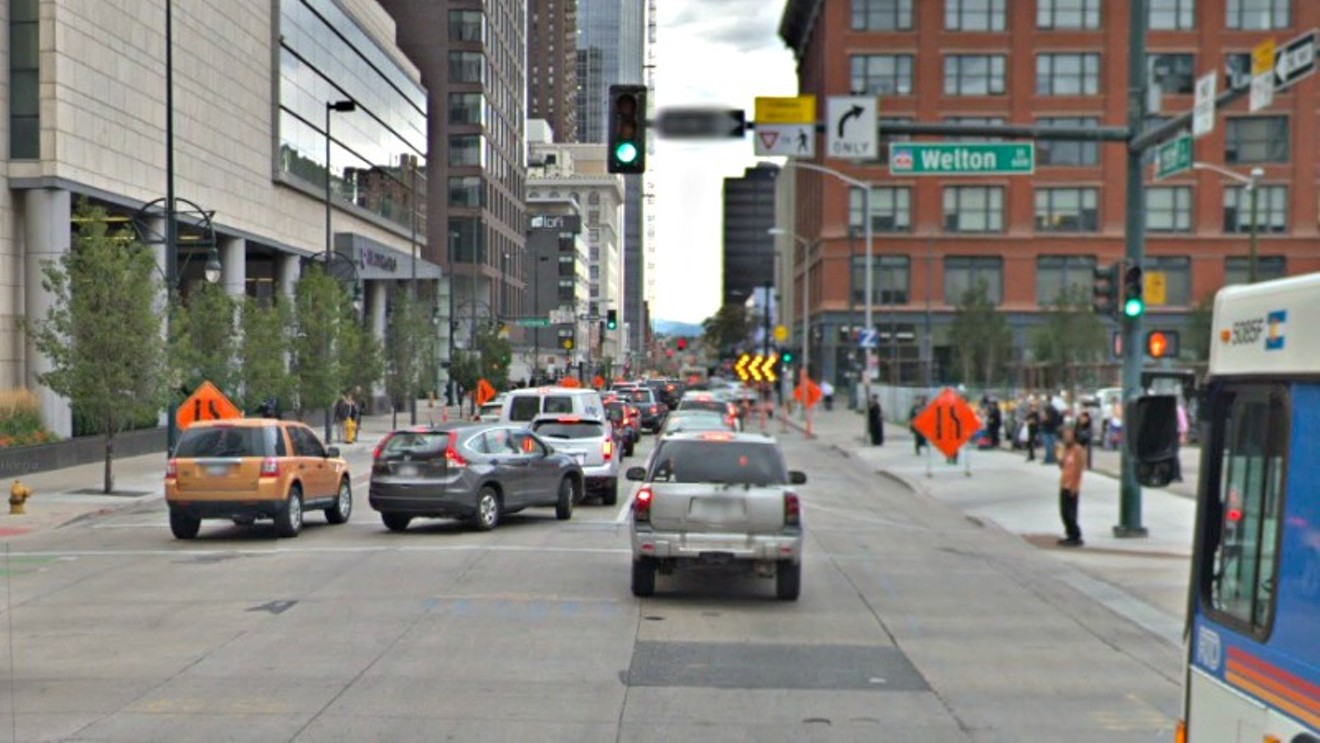Michael Finochio, traffic engineering manager for Denver Public Works, knows that tinkering with signal lengths won't solve the Mile High City's commuting problems, which have been exacerbated by rapid population growth amid the ongoing economic boom.
But while officials work to implement Denver Mayor Michael Hancock's mobility action plan, whose goals include 30 percent of commuters walking, biking or taking public transit to work by 2030, Finochio and his staff are trying to at least incrementally improve the current traffic situation, especially in the Central Business District, where what is known as the 2018 Downtown Signal Retiming Project is under way.
The study should take about a year, with implementation expected to occur around this time in 2019, and Finochio says one component involves "an equipment upgrade that will allow a signal to keep operating, depending on the load, for hours to over a day if there's a loss of power. The signal will operate in normal mode to a certain point, then go into a flashing-red operation. And at the same time, it will have better communication with us. As soon as it loses power, it will send an alert to our maintenance and operations facility."
Still, the heart of the project will involve analyzing traffic patterns to determine the best timing for signals throughout downtown.
"We try to retime the corridors in the CBD every three to five years," Finochio reveals. "Sometimes what we do has a bigger impact, and sometimes it's load-balancing. Downtown has gone through some significant changes, with the whole Denver Union Station area and so many new buildings coming in. That changes traffic patterns. So we collect data about vehicles, queuing, the number of bicycles and pedestrians, and then we run it through a computer model that optimizes the allocation of time in each direction."
Signal timing downtown "is a little more straightforward, because there are so many one-way streets," he goes on. "But it's also such a tight grid, and with a signal at every intersection, that adds the complexity back into it."
So, too, does the presence of so many people on foot. According to Finochio, "We run the signals downtown on a fixed-time operation, so they'll be the same length even if a pedestrian isn't there. If we try to do a detection or push button, it throws off the coordination. And there are a lot of other factors, too, including the 16th Street Mall, where the shuttle operates differently from the light rail, which operates differently from the bus system, which operates differently from what we need to move delivery vehicles through — or cars or bikes or pedestrians."
For these reasons, Finochio stresses, "we try to take a balanced-demand approach — and we always keep safety in mind. We have to provide at least a path across the intersection — a clearance space, a service space and a safety space for pedestrians, in particular. And we have to leave a certain amount of time with the signals when all traffic essentially stops to let people and cars and buses and trains clear the intersection before we allow another movement to go through."
Some of the biggest changes regarding the length of signal cycles downtown — and, yes, the waits have grown steadily longer at most lights over the past couple of decades — have been made to accommodate light rail.
"The downtown grid used to run on a sixty-second cycle, which is actually optimal for signal spacing," Finochio points out. "When light rail came in, we bumped that up to 75 seconds to give the train more time to clear. But when the light rail went to four cars instead of two or three, we had to move the signals to ninety seconds, and we changed the average walking speed from four feet per second to three and a half feet per second."

The increase in the number of light-rail cars per train has resulted in signal times being lengthened in the Central Business District.
File photo
This scenario would be improved if more people took light rail, since a train car packed with people takes up a lot less space than if each of them was in a vehicle of his own. But that wouldn't solve all the problems related to downtown traffic. After all, adding more train cars would require another round of signal rejiggering.
In the meantime, most drivers tend to take 14th Street to enter the CBD and 15th Street in the evening to get out again — and this behavior has resulted in a traffic-engineering philosophy.
"Typically," Finochio says, "numbered streets carry more volume than the named streets downtown, so we try to set them for progression" — meaning that their light sequences are synchronized. "Even though Arapahoe is really wide, it's not set for progression, so you could easily get stopped at 16th, 17th, 18th and 19th, because we're progressing the numbered streets first. Then we try to adjust the named streets — although there are exceptions. Broadway, Lincoln, Colfax, Speer: Those are major arterials, and we progress those."
Until the Downtown Signal Retiming Project concludes, what are the best streets to use coming in and out of the Central Business District? Finochio's answer to this question speaks volumes about downtown traffic today.
"That's almost impossible for me to say, because it would depend on where you're coming from, the traffic patterns and the time of day," he allows. "But if you're driving at three o'clock in the morning, you can take any street you want."













